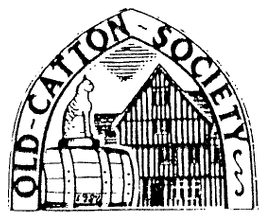In December Tony Leech gave us a beautifully illustrated tour of the fascinating and colourful world of fungi, focusing on the 'Devil' species.
The UK is home to some 8-9000 species of fungi, of which half are very small, and only a few are edible. The problems of identification are such that field guides are not always reliable as to species and toxicity, and often contradictory. Differentiation between some species is only possible with a microscope, or even DNA analysis.
It is commonly thought that fungi are edible if they peel, can be stirred without blackening a silver spoon, are eaten by animals or smell like a mushroom. This is not necessarily the case. They should only be consumed if a positive identification is made and the specimen is in good condition: they should not be eaten raw and only cooked in small quantities if new to you.
The Fly Agaric, with its white spotted red cap is well known, is poisonous and possibly deadly. It has emetic qualities and can cause inebriation. Beware also of the Chicken of the Woods, found on cherrywood, and the Brown Rollrim.
They are about 50 species of true mushrooms of the type familiar to most people. Beware, however, the Yellow Stainer which looks like a field mushroom, but its cap and stem readily stain yellow when rubbed. It may smell of ink or disinfectant and gives rise to stomach cramps if consumed.
'Magic Mushrooms', of which there are 38 species have, since 2005, been classified as class A drugs. They can be responsible for dangerous behaviour, and the police give regular advice to schools on the subject.
The Deathcap, recognised by white gills, is the most deadly of all and is very common in Norfolk: a quarter of a cap could kill. Other Illustrations featured the familiar evil smelling Stinkhorn which attracts insects to disperse its spores, the strange black Witches' Butter and the slimy Fool's Funnel.
Ray Jones
